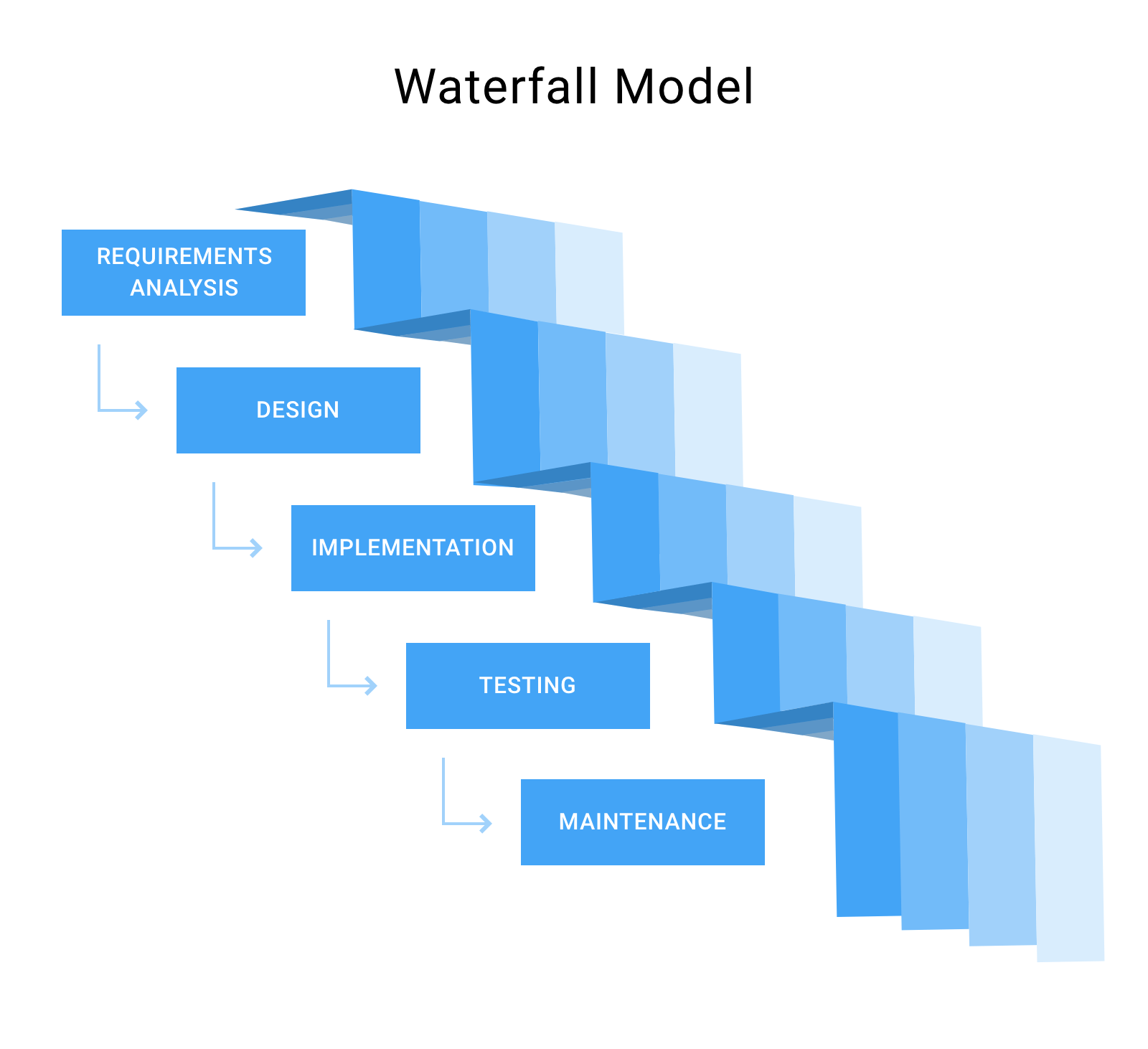The Waterfall or cascade model assumes a stepwise direction of teams to solve problems sequentially and according to a strictly developed plan. The Waterfall methodology is referred to as the linear-sequential life cycle model (Risener, 2022). The main principles of the Waterfall model are the importance of observing the stages of work and precise documentation. According to this model, it is impossible to skip stages, and the next stage will not begin until the previous one ends. After setting the task, the client does not participate in product development until the final acceptance of the work.

The critical difference between Waterfall and other methodologies is the inability to go back one step and change something. The disadvantages of this model include a large number of documents that need to be updated. Due to the requirement of the complete order in the documentation, work on the project can be significantly delayed. The user and the customer are isolated from the work progress and cannot make timely adjustments. It can be difficult for the customer to work with this model since the initial requirements are often vague (Risener, 2022). Since testing occurs only at the very end of the Waterfall model, incompetent specialists can be engaged in the project, and no one will notice it.
The Waterfall methodology is relevant for large projects because it is resistant to staff updates. All work is clearly documented, participants can change, and this will not affect the timing of the work. Employees are disciplined thanks to the competent management inherent in the cascade method (Risener, 2022). The system’s main advantage is transparency since it is evident in advance what will be implemented at each stage, allowing it to predict budgets and recruit a team.
The waterfall method is beginning to be used more often in IT, as it is suitable for large projects where precise team discipline is required. However, Waterfall puts forward specific requirements for the customer. First, the customer must be aware of the expectations from the final product (Risener, 2022). A leader can work according to the waterfall method if the customer is ready not to participate in product development and wants to know clear deadlines. The Waterfall suits complex orders requiring phased development and a precise sequence.
Reference
Risener, K. (2022). A study of software development methodologies.Computer Science and Computer Engineering Undergraduate Honors Theses.